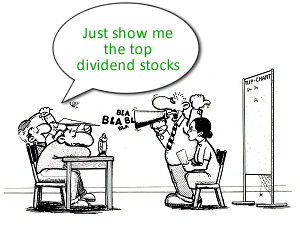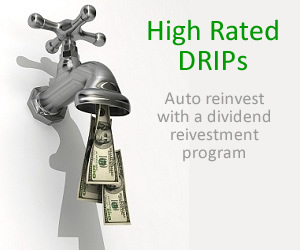Canadian Stocks with Dividends
Like any other dividend paying investment, investors will often choose to add Canadian dividend stocks to their portfolio to take advantage of regular cash payments from the underlying asset in addition to any appreciation they might see when they decide to sell their shares. Many Canadian stocks are offered by extremely stable companies including the large Canadian banks. These enterprises offer stable returns on your investment that have historically kept a few points ahead of the current inflation rate.
High Yields Are Attractive
You may also find international stocks pay a rate much higher than the more stable companies. If a stock’s current dividend rate is over 10%, it may still be a good item to add to your portfolio. However, you must recognize that it will carry more risk, and your investments should be diversified accordingly to minimize any potential losses. For a few examples of high paying Canadian dividend stocks, the Yellow Pages Income Fund was showing an 18.11% dividend yield, and the Penn West Energy Trust was reported to have a 15.37% dividend yield.
Canadian Dividend Stocks Could Pay For Themselves
If you’re interested in investing your money in one of these stocks, you should consider one of the Canadian dividend stocks that have been dubbed a dividend aristocrat by Standard and Poor’s. While many investors may be familiar with the American companies that are on this list, they may not have noticed that it includes a few Canadian stocks as well. To be added to the aristocrat stock list, a company must have weathered bad times, as well as flourished in good times, without cutting dividend payments to their shareholders. If you hold these stocks for a few years, you can see that your initial investment could be repaid well before you decide to sell your shares. The following list shows a few of these smart investment choices:
• Bank of Nova Scotia (BNS) – dividend yield of 4.2% with a one-year return of 32.4%
• Toronto-Dominion (TD) – dividend yield of 3.5% with a one-year return of 38.3%
• Enbridge (ENB) – dividend yield of 3.7% with a one-year return of 31.1%
Canadian Dividend Stocks Are Traded On The New York Stock Exchange
If you currently invest in US stocks, it’s just as convenient to purchase Canadian dividend stocks. It makes sense that these investment options would be traded on the Canadian Stock Exchange in Toronto (TMX), but many are also available on the New York Stock Exchange. You should be able to purchase selected Canadian dividend stocks in the same manner that you invest in any major US stock.
The following Canadian dividend stocks are traded on the New York Stock Exchange and have shown stable rates of return in recent years:
• Bank of Montreal (BMO) with a yield of 4.32%
• BCE Inc (BCE) with a yield of 5.63%
• Canadian Imperial Bank of Commerce (CM) with a yield of 4.57%
• Sun Life Financial Inc (SLF) with a yield of 4.59%
• TELUS Corporation (TC) with a yield of 5.20%
• TransCanada Corporation (TRP) with a yield of 4.29%
Regular Dividend Payments Can Grow Your Portfolio
Many people are attracted to Canadian dividend stocks because of their high dividend yield when compared to other investment options. These stocks continue to offer a monthly or quarterly payback on your initial investment that helps increase your return while offsetting your losses due to inflation. If you also enroll in any available DRIP plans, the benefit will quickly compound as your number of shares grows with every dividend payment.
Tax Implications
Don’t forget that while dividends are given preferential tax treatment in most cases, they are still considered taxable income. The Canadian government will impose a 15% non-resident withholding tax on these dividend payments, but you can recoup a portion of this cost by filing for a foreign tax credit on your yearly tax return. Depending on your individual situation, the US income tax on these dividends may vary, but it will generally amount to a tax of 15% or less.



